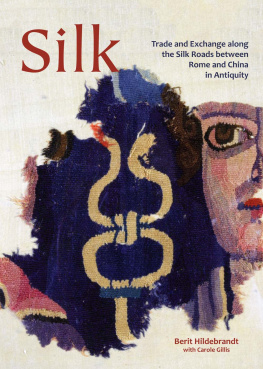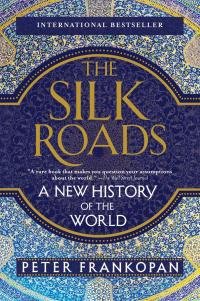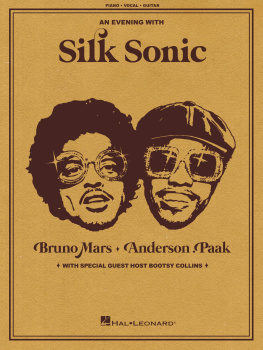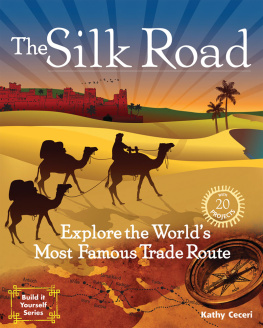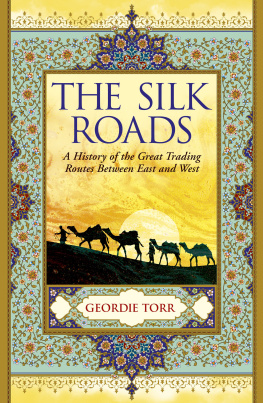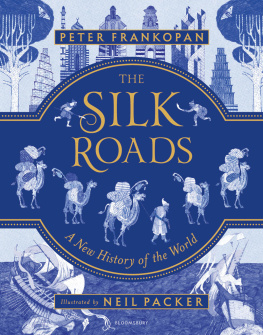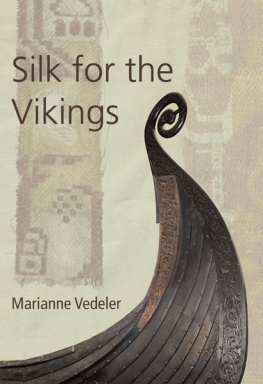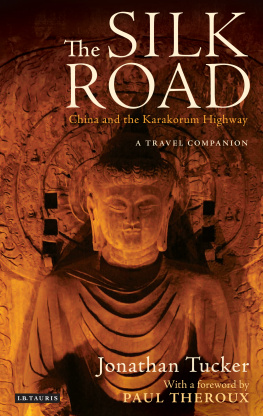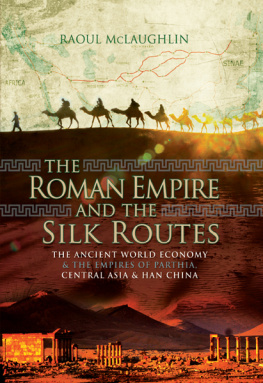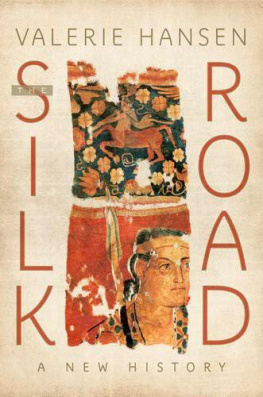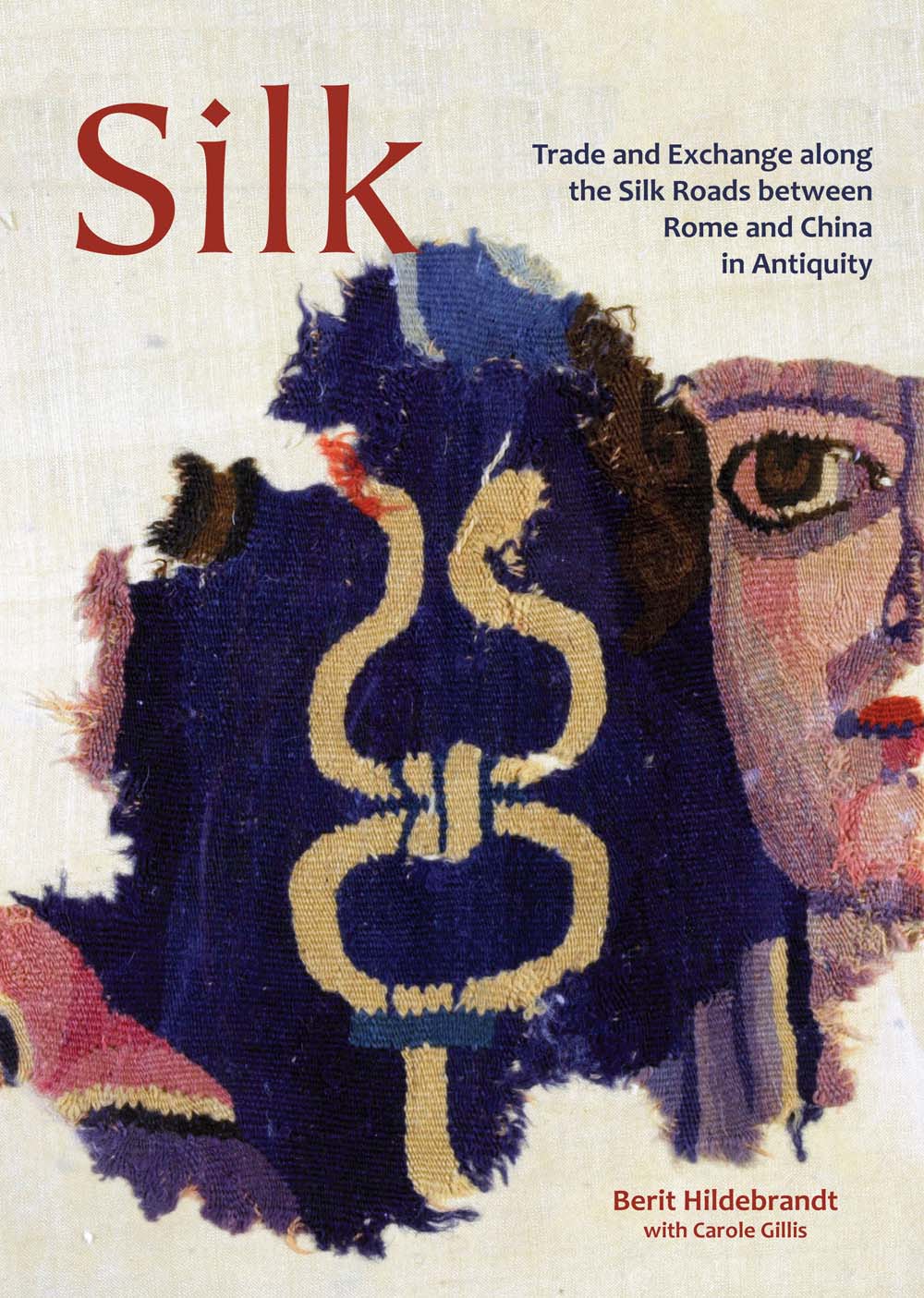
To the memory of
Irene Lee Good
(19582013)
Contents
Berit Hildebrandt
Liu Xinru
J. Mark Kenoyer
Adam Hyllested
Berit Hildebrandt
Thelma K. Thomas
Lillian Lan-ying Tseng
Zhao Feng
Angela Sheng
Robert E. Murowchick, Angela Sheng and Kaoru Ueda
Preface
The idea of compiling this volume was born during a workshop generously funded by the Volkswagen Foundation within the framework of a Volkswagen Fellowship Symposium at the Mahindra Humanities Center at Harvard University that took place from April 2122, 2012. Since then, this volume about the Silk Roads has traveled a long way, with contacts stretching from China through Europe to the United States and back.
I am very grateful to all the people who over the years so generously and patiently have contributed their time, help and advice to this project.
In particular I want to thank the speakers and respondents at our workshop, where and with whom it all began. Many thanks also go to the staff at the Mahindra Humanities Center, who made this event possible: Homi Bhabha, Steven Biel, Shannon Mackey, Mary Halpenny-Killip and Sarah Razor. We set out as a group of scholars specialized in Ancient World Studies, Chinese and Indian history and archaeology and ancient textile research who met to discuss the production, use and exchange of silk along the Silk Roads. I am grateful to J. Mark Kenoyer (University of Wisconsin, Madison), Liu Xinru (The College of New Jersey), Peter Fibiger Bang (University of Copenhagen), Beate Wagner-Hasel (University of Hannover), Thelma K. Thomas (New York University), Lillian Lan-ying Tseng (New York University), Zhao Feng (China National Silk Museum Hangzhou and Donghua University Shanghai) and the late Irene Good (University of Oxford) for accepting the invitation to give a talk, and to Richard H. Meadow (Harvard University), Marie-Louise Nosch (University of Copenhagen), Mary Harlow (University of Leicester) and Angela Sheng (McMaster University, Hamilton, Ontario) for acting as respondents.
Sadly, Irene Goods ill health would not allow her to participate in the workshop or contribute to the proceedings, although she refused to give up her plan to do so until the very end. With her untimely death, we have lost a generous and brillant colleague whose presence is still deeply missed. We have thus decided to dedicate this volume to her.
I am still overwhelmed by the generosity of the colleagues who stepped in. Angela Sheng, who would have acted as Irenes respondent at the workshop, agreed to outline Irenes contribution from her abstract, which ended in a masterly contribution on the exchange of weaving techniques along the Silk Roads. Angela also contacted Robert E. Murowchick and Kaoru Ueda at Boston University, who together wrote a wonderful tribute to Irene. When it turned out that the contributions regarding the Eastern perspective on exchange on the Silk Roads outweighed the Western ones somewhat, Adam Hyllested (University of Copenhagen) luckily joined us and added the linguists perspective to this volume.
I am also very grateful to Marie-Louise Nosch who offered to publish this volume in the Ancient Textile Series of the Danish National Research Foundations Centre for Textile Research (CTR) and offered comments on the contributions. Eva Andersson-Strand (CTR) was always supportive of the project. I also thank the publishing staff at Oxbow, in particular Clare Litt, Julie Gardiner, Hannah McAdams and Mette Bundgaard, who have guided this project efficiently and patiently.
I would have despaired in the face of international publishing permissions, difficult-to-find bibliographical references and photoshop-related challenges without the capable student assistants at CTR who kindly and patiently helped whenever their time allowed: Ziff Julie Jonker, Sidsel Frisch, Philip Kristian Dons Madsen, Stine Marie Bttern, Louise Villefrance Isted Ludvigsen and Line Lerke. The same is true for the kind support and expert advice given by my colleagues Lena Bjerregaard, Ulrikka Mokhdad, Kasper Grnlund Evers and Peder Flemestad, and by Katharina Yu and her team for their help with Chinese translations. I am deeply indebted to Cherine Munkholt for her invaluable advice regarding all editing-related questions. Carole Gillis was the most amazing editing support imaginable and an astute reader, who greatly improved not only the texts, but also the contents without her, this volume would never have become what it is.
Another huge thank you goes to the peer reviewers, whose comments improved our volume greatly.
The support and generosity of different persons and institutions all over the world who helped with the acquisition of publishing permissions cannot be adequately expressed in words. The editor and the publisher gratefully acknowledge all the permissions granted to reproduce the copyright material in this book. Every effort has been made to trace copyright holders and to obtain their permission for the use of copyright material. However, the editor and publisher apologize for any errors or omissions and would be grateful if they were notified of any corrections that should be incorporated in future reprints or editions of this book.
This publication would not have been possible without the generous financial support of the Volkswagen Foundation, a Marie Skodowska Curie Fellowship for a two-year research stay at the CTR, and Marie-Louise Nosch/CTR through an Anneliese Maier Research Award from the Alexander von Humboldt Foundation and support from CTR. I am most grateful to all for their support in making it a reality.
A note should be made on formal questions. We have not insisted on standardizing American and British spelling, abbreviations or measures (like BC and AD/BCE and CE). The same is true for the transcription of Chinese names that is consistent within one chapter, but varies between authors. Chinese authors and personages are referred to with their family name first and their given name second (the only exception being persons with Western first names and Chinese family names, in which case the order follows the Western use). This is true both for references and in the texts. Western authors are referred to in the conventional Western way. We have done our best to standardize the bibliographies, but learned from our Chinese colleagues that there are crucial differences that cannot and should not be eradicated. Modern editors of Chinese historical texts are often not specified (although the year of the modern publication is given), because in most cases, the projects were collaborative and initiated by publishers. Therefore it is not in the modern bibliographical convention in East Asian studies to list modern editors. In order to combine Western and Eastern reference systems, we have tried to steer a middle way by giving bibliographical data that allows readers to find the Chinese literature in the catalogues of the big American university libraries.
Finally, I want to thank the two persons who inspired me: Boris Dunsch (University of Marburg) who first drew my attention to the exchanges between Rome and China in antiquity and Beate Wagner-Hasel (University of Hannover) who suggested that I look at silk in particular.
Copenhagen/Lund 2015
Berit Hildebrandt
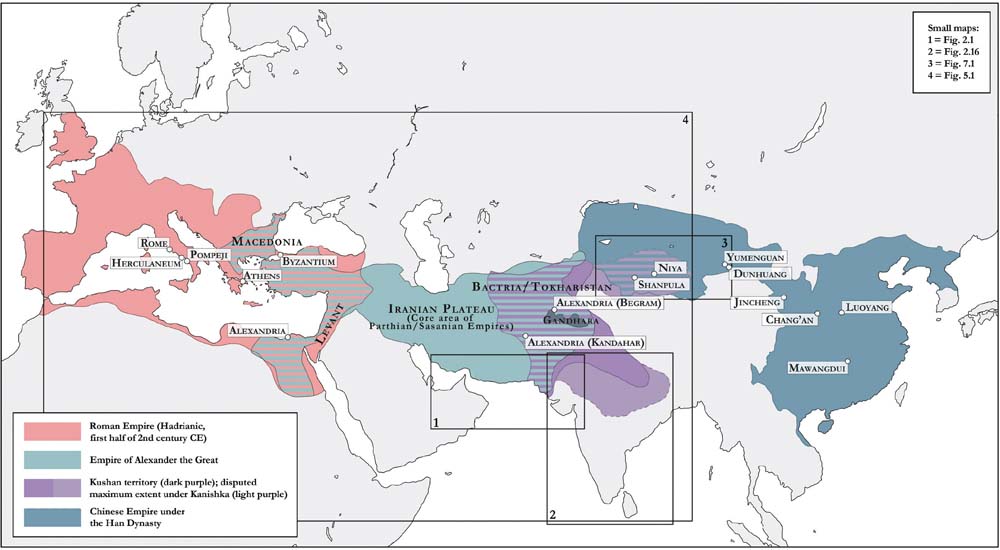
General map showing approximately the empires, territories and major cities mentioned in the volume along and around the Silk Roads (map by Berit Hildebrandt, with the kind support of Kasper Grnlund Evers and Lillian Lan-ying Tseng, drawing: Sidsel Frisch)
Next page
